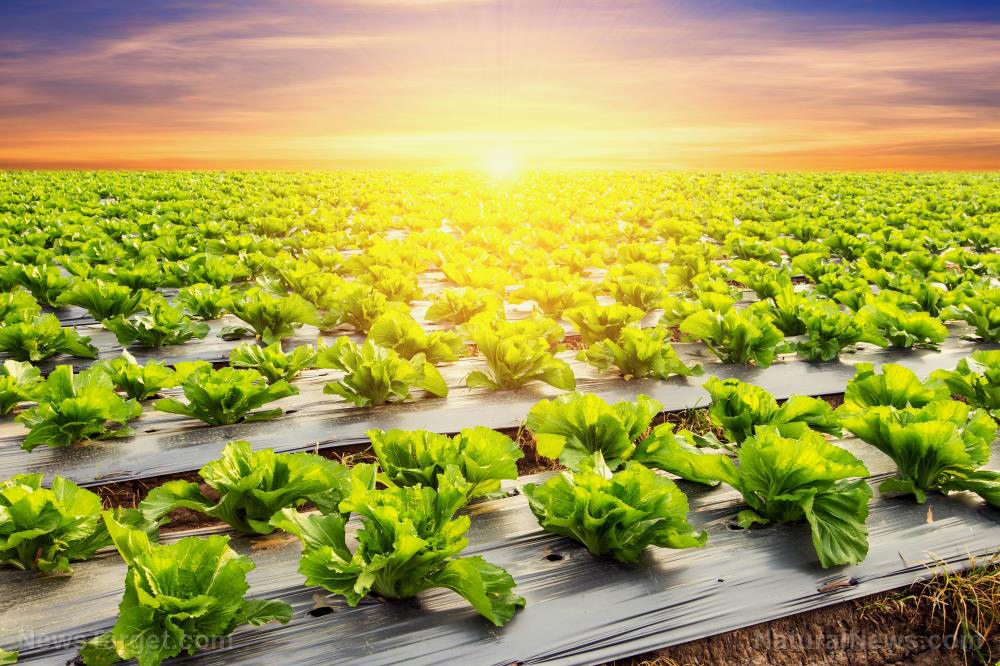Engineers develop "Vegebot" that can harvest lettuce

(Natural News) While using machines to harvest crops isn’t a new concept, using a robot that does so through machine learning is. A team of engineers from the University of Cambridge developed a vegetable-picking robot that uses machine learning to harvest a commonplace, but challenging, agricultural crop: lettuce.
The team, led by Cambridge’s Dr. Fumiya Iida, initially trained their robot, called “Vegebot,” to recognize and harvest iceberg lettuce in a lab setting. First tested in laboratory conditions, the robot was later successfully tested in a variety of field conditions with the help of local fruit and vegetable co-operative, G’s Growers.
Currently, Vegebot is nowhere near as fast or as efficient as a human worker. However, it demonstrates how advanced robotics can be used in agriculture to help harvest certain crops, such as iceberg lettuce, that have been particularly challenging to harvest mechanically.
Harvesting iceberg lettuce with AI
While certain crops such as wheat and potatoes have been harvested mechanically for decades, other crops such as iceberg lettuce still remain harvested by hand. Not only is iceberg lettuce easily damaged, it also grows relatively flat to the ground, both factors that present a challenge to robotic harvesters.
“Every field is different, every lettuce is different,” said co-author Simon Birrell, a research student from Cambridge’s Department of Engineering. “But if we can make a robotic harvester work with iceberg lettuce, we could also make it work with many other crops.”
Vegebot consists of two main components: a computer vision system and a cutting system. The former uses an overhead camera to take an image of the lettuce field, which the machine learning algorithm then uses to identify each individual head of lettuce on the field before classifying whether it should be harvested or not. For Vegebot be able to do this, the engineers trained its machine learning algorithm using example images of lettuce. Once it could recognize healthy heads of lettuce in the lab, they continued to train it in actual fields, under a variety of weather conditions.
To help ensure a smooth cut, Vegebot’s cutting system also has its own camera, placed alongside its blades. Another important component of the cutting system is the robot’s gripping arm. The engineers designed the arm so that it would exert just enough pressure to grip a head of lettuce without crushing it. Additionally, the engineers stated that the force of the arm’s grip can also be adjusted for other crops.
“We wanted to develop approaches that weren’t necessarily specific to iceberg lettuce, so that they can be used for other types of above-ground crops,” stated Iida.
Harvest robots to replace labor
While harvesting with Vegebot currently takes longer than manual harvesting by hand, the plan is to develop the technology to the point where it can be competitive with a human. This would allow growers to remove the only remaining manual part of the lettuce growing process.
“At the moment, harvesting is the only part of the lettuce life cycle that is done manually, and it’s very physically demanding,” said co-author Julia Cai, who worked on Vegebot’s computer vision system.
Additionally, Vegebot could help reduce food waste from discarded produce. Currently, fields are harvested only once, and any unripe fruits or vegetables are discarded. An automated system such as Vegebot can run round the clock, continually harvesting ripe produce, while leaving the unripe ones untouched.
However, as with any automated system, Vegebot raises the question of labor and of people losing jobs to robots. It’s true that automated systems like Vegebot can help save people from having to do backbreaking labor, while also helping reduce waste. That said, they can also take jobs away from people who need them. At a widespread enough scale, this could have a negative effect on employment. If not approached correctly, this push toward automation can lead to as many problems as it solves.
Sources include:



